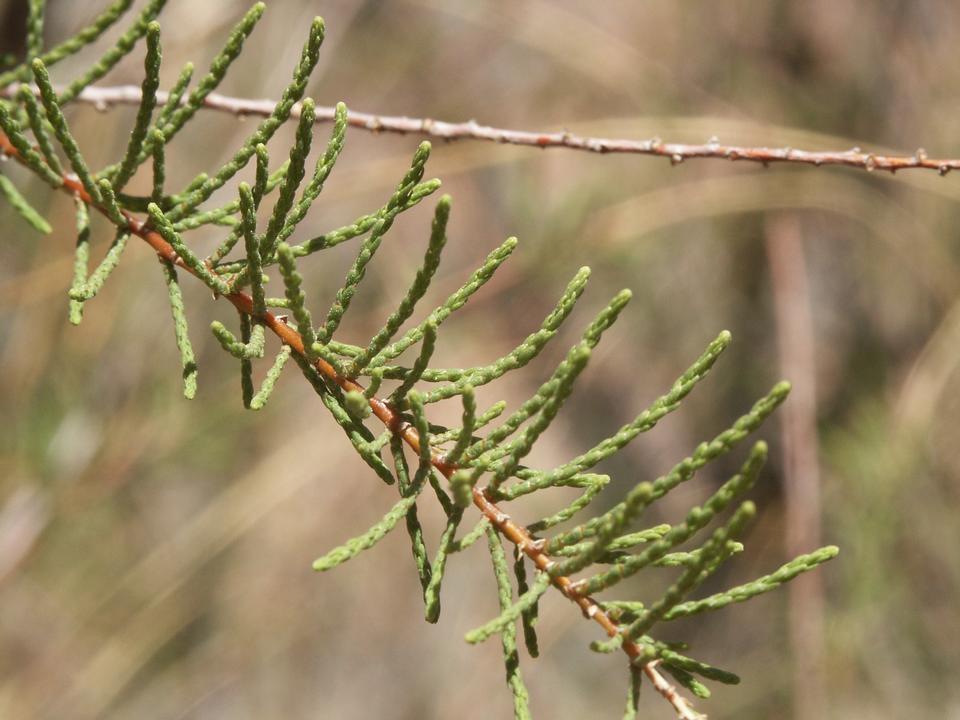Tamarisk or Salt-cedar
Tamarix ramosissima
Tamaricaceae - Tamarisk
Description
Leaves: Alternate; simple; scaly; very small; deciduous; blue-green; no petiole.
Twigs/buds: Twigs slender, spreading, and drooping. Buds small, round.
Flowers/fruit: Flowers perfect; 5 petals; very small; pink; arranged in large, drooping inflorescences at branch ends; open in May. Fruit a small capsule.
Bark: Gray; smooth.
Wood: No information available.
General: Native to China. Much planted in the past in the western U.S., including Utah, for conservation reasons, but has become a naturalized weed along streams in dry areas where it out-competes most native plants. Very salt and drought tolerant. Shade intolerant.
Landscape Use: This shrubby tree is a pest and should no longer be planted. Other species may also have been planted and are occasionally available in nurseries, including Tamarix parviflora. Hardiness ranges from zones 7-10 to zones 2-7, depending on species.
Comments & Limitations: Should not be planted because of weediness.
Cultivars: 'Cheyenne Red', 'Pink Cascade', 'Rosea', 'Rubra', 'Summer Glow'.
Characteristics
General
| Family | Tamaricaceae - Tamarisk |
|---|---|
| Cultivar Availability | No |
| Hardiness Zone | 5-8 |
| Type | Broadleaf |
| Utah Native | No |
Growth
| Growth Rate | Medium |
|---|---|
| Mature Height | Low |
| Longevity | Medium |
| Is Good Under Power Lines | Yes |
| Crown Shapes | Shrubby |
Ornamental
| Bark | No |
|---|---|
| Fall Color | Yes |
| Flowers | Yes |
| Foliage | No |
| Fruit | No |
Tolerance
| Shade | Low |
|---|---|
| Salt | High |
| Drought | High |
| Poor Drainage | High |
| Alkalinity | High |
| Transplanting | Medium |





